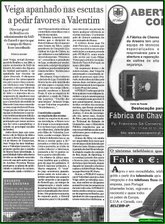What a loss of sea ice looks like: an estimated 35,000 walruses, crowded on one stretch of Alaskan beach. Images taken on Saturday via plane as part of the National Oceanic and Atmospheric Administration's annual marine animal survey capture just that.
The enormous grouping of the mammals near the Inupiat Eskimo village of Point Lay, about 700 miles northwest of Anchorage, is the result of disappearing sea ice, explains a walrus expert with the US Geological Survey.
The area's summer sea ice vanished by mid-September, leaving the walruses with nowhere in the Chukchi Sea to rest between their dives to the seafloor for food, Chadwick Jay tells the Alaska Dispatch News.
He says that six of the last eight years have seen this occur. The walruses met trouble on land: US Fish and Wildlife Service observers last week spotted an estimated 50 carcasses on the beach; they suspect the animals may have been killed in a stampede, which can be triggered by a polar bear, human hunter, or low-flying airplane.
A necropsy team will head to the area to investigate. And as far as food goes, biologists note that beach areas aren't the best for feeding; the richest food sources are found offshore along the continental shelf.
The World Wildlife Fund had this to say to the AP: "The walruses are telling us what the polar bears have told us and what many indigenous people have told us in the high Arctic, and that is that the Arctic environment is changing extremely rapidly and it is time for the rest of the world to take notice and also to take action." (The same phenomenon occurred on a smaller scale last year.)
This article originally appeared on Newser: Why 35K Walruses Crowded Onto This Beach









































































.jpg)









0 comentários:
Enviar um comentário